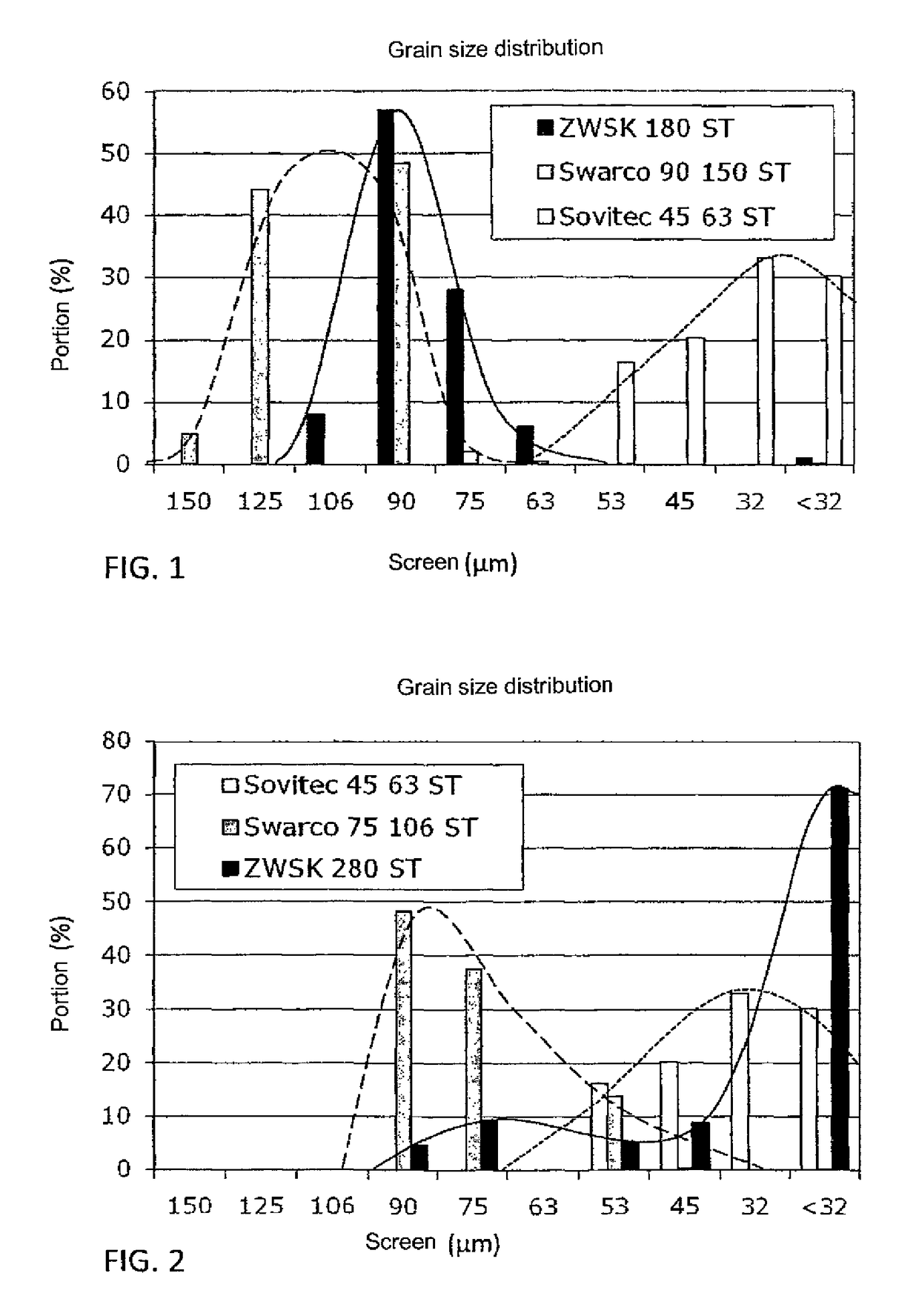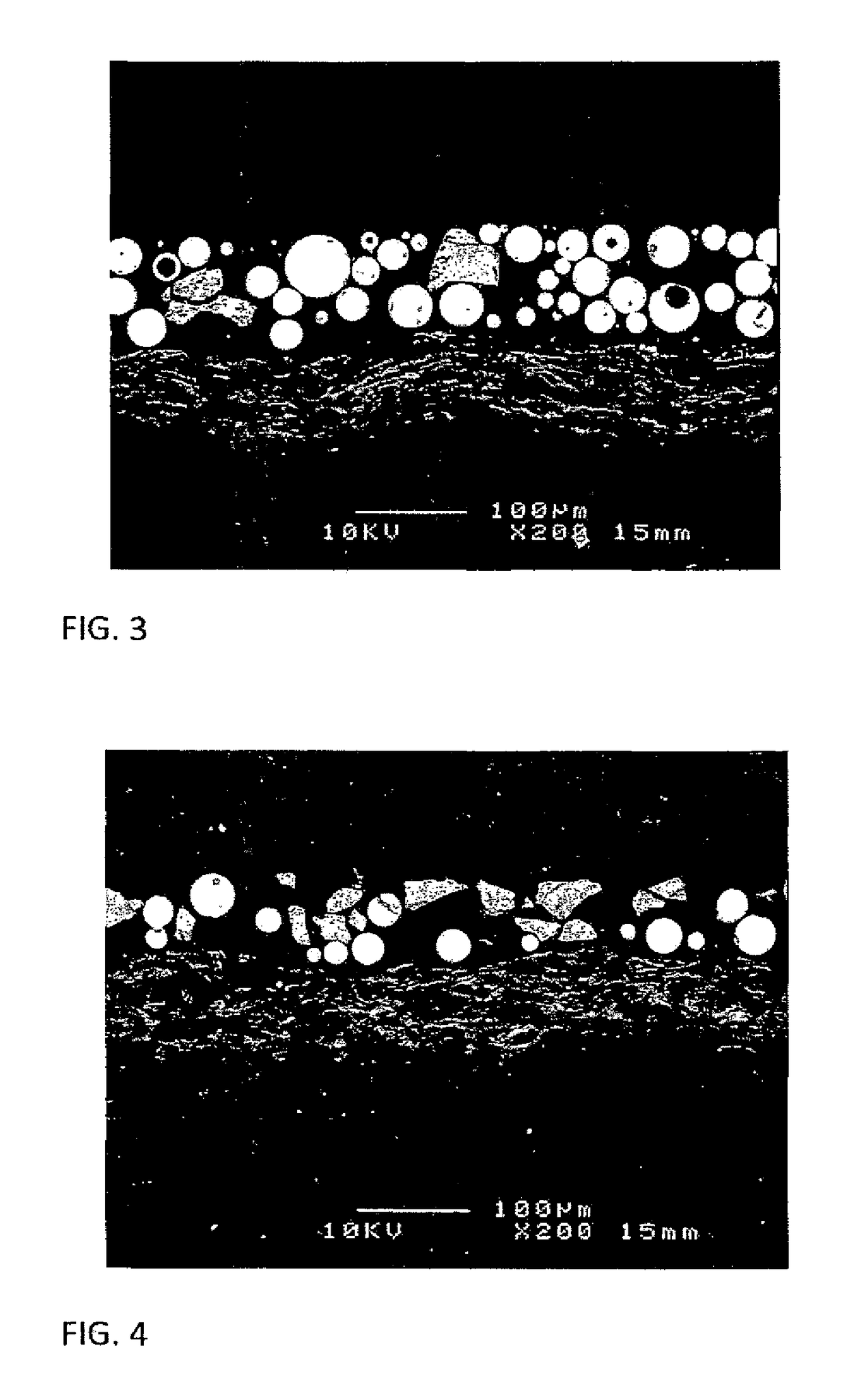Wear protection coating based on a synthetic resin matrix, method for the production thereof and use thereof
- Summary
- Abstract
- Description
- Claims
- Application Information
AI Technical Summary
Benefits of technology
Problems solved by technology
Method used
Image
Examples
Embodiment Construction
[0107]FIG. 1 shows the grain size distribution of the non-uniform transparent hard material (ZWSK-ST 180) specified in Table 1 and of the two fractions of a round transparent solid material (Swarco 90-150 μm and Sovitec 45-63 μm). In the instant case, there is no overlapping between the coarse fraction and the fine fraction of the transparent round solid material, wherein the grain size distribution of the hard material is chosen such that it lies between the coarse and the fine fraction of the round transparent solid material. Due to the fact that the coarse fraction of the round transparent solid material is slightly coarser than the grain size of the hard material, the wear of the die plates can be reduced and damages to the die plates can be avoided. The average grain size of the coarse fraction of the transparent round solid material particles is approx. 106 μm and the average grain size of the fine fraction is approximately 30 μm. The average grain size of the coarse fraction ...
PUM
| Property | Measurement | Unit |
|---|---|---|
| Fraction | aaaaa | aaaaa |
| Percent by mass | aaaaa | aaaaa |
| Percent by mass | aaaaa | aaaaa |
Abstract
Description
Claims
Application Information
 Login to View More
Login to View More - R&D
- Intellectual Property
- Life Sciences
- Materials
- Tech Scout
- Unparalleled Data Quality
- Higher Quality Content
- 60% Fewer Hallucinations
Browse by: Latest US Patents, China's latest patents, Technical Efficacy Thesaurus, Application Domain, Technology Topic, Popular Technical Reports.
© 2025 PatSnap. All rights reserved.Legal|Privacy policy|Modern Slavery Act Transparency Statement|Sitemap|About US| Contact US: help@patsnap.com


